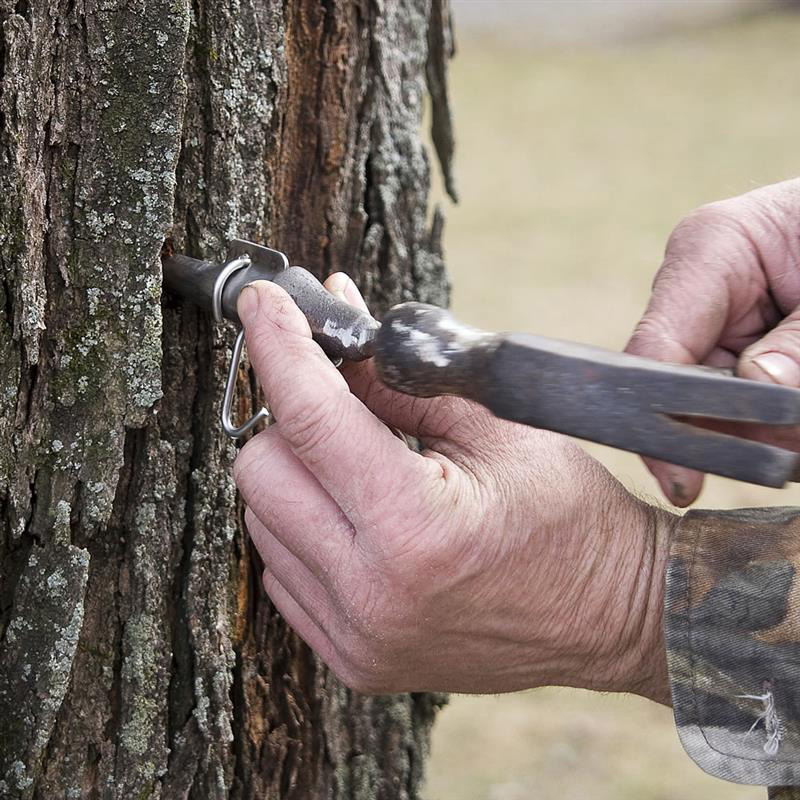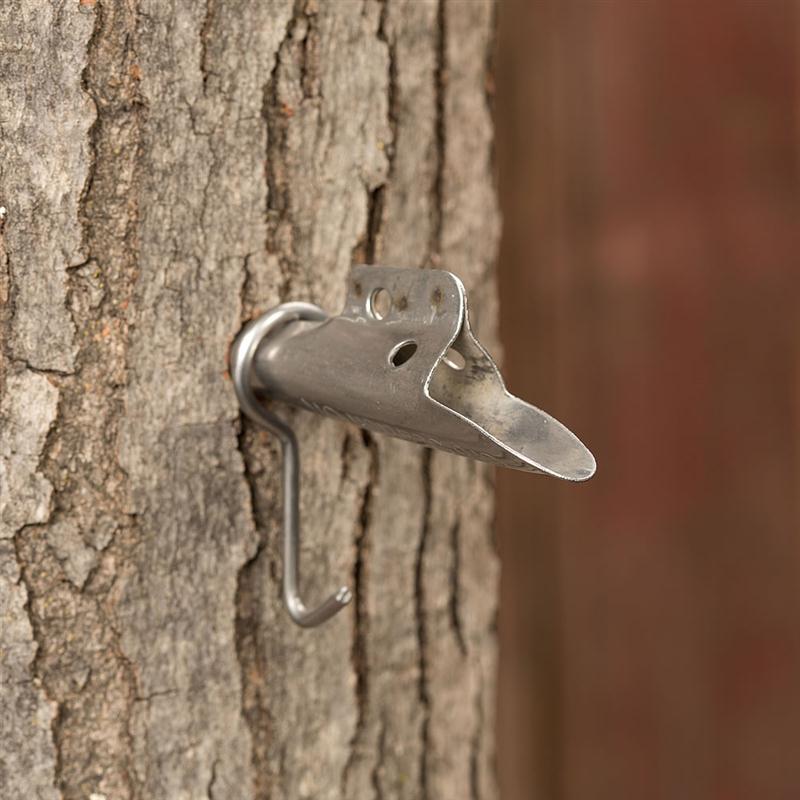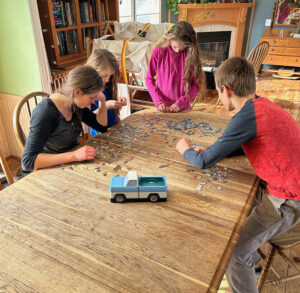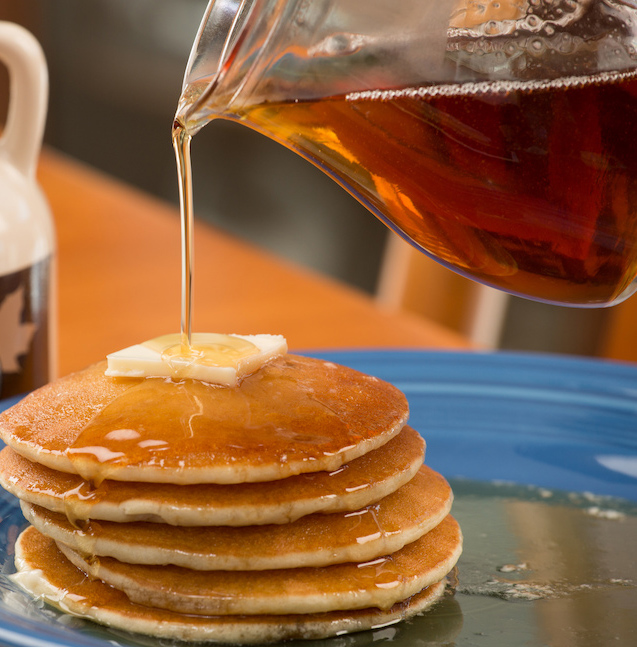
As a child, my favorite books were about pioneers and native Americans. I learned that Native Americans were the first to discover and produce maple syrup, and they taught the settlers how to do it. At the age of fourteen, I decided it was time to try it myself.
Our backyard contained several mature Sugar Maple trees, and my parents were okay with the idea.
You can do it!
Without much research, and no loose change to purchase the needed supplies, I began the project with an old fashioned brace and bit, a hacksaw, plastic milk jugs, and one-inch-diameter copper pipe (an unwise decision on more than one account: copper is poisonous to trees, and one-inch is much too big). It was late February in Northern Ohio at that time, and the sap ran. Unfortunately, much of it ran down the tree because the pipe was not tapered, and did not fit snugly in the hole.
Thankfully, a family friend who was an experienced maple syrup producer visited our home soon after my project began. He saw my pitiful attempts, and out of the kindness of his heart, tightened my copper spouts with tiny wooden wedges. To help me the following year, he promised to send me some real supplies. He kept his word and sent some spiles, and along with them, some great advice. I’ve been forever grateful to him.
50 Years of Sugaring
This year, 2017, marks exactly fifty years since that first experiment with collecting maple sap and cooking it down into delicious maple syrup. Ever since that season so long ago, when February rolls around, there has always been this itch to produce the delicious natural syrup that we love to pour liberally over pancakes, waffles and cereal. It’s a perfect late-winter project that gets us out of the house.
January is a good month to prepare for the project. First, we must decide on the trees we will be tapping. Any maple tree will produce sap, but the best trees are Sugar Maples. If this is something you’d like to begin doing as a family project, your yard maples will be an excellent place to start. Size matters, though. A rule of thumb is one tap for each foot of tree diameter.
If this is to be a home experiment, a small amount of sap can be cooked down on the kitchen stove (from one or two trees.) Also worthy of note is that yard trees normally produce about twice as much as trees in woods. You can usually expect an average of one gallon finished syrup from a large Sugar Maple in your yard, and about one-half gallon of syrup from a woodlot tree.
Prepare
So purchase the number of spiles you will need, and a bucket or bag to go with each one. (Plastic milk jugs are generally too small.) Get a new, sharp drill bit in the appropriate size, and use it only for this project. Using a cordless drill is the best way to drill the holes. Wait for a weather forecast that predicts a string of days when it will be below freezing at night, and above freezing during the day. That’s what it takes to make the sap flow. The season often begins in mid February in our area of Ohio. In areas further north, like Canada and the New England states, the season will be later, usually beginning around the first of March.
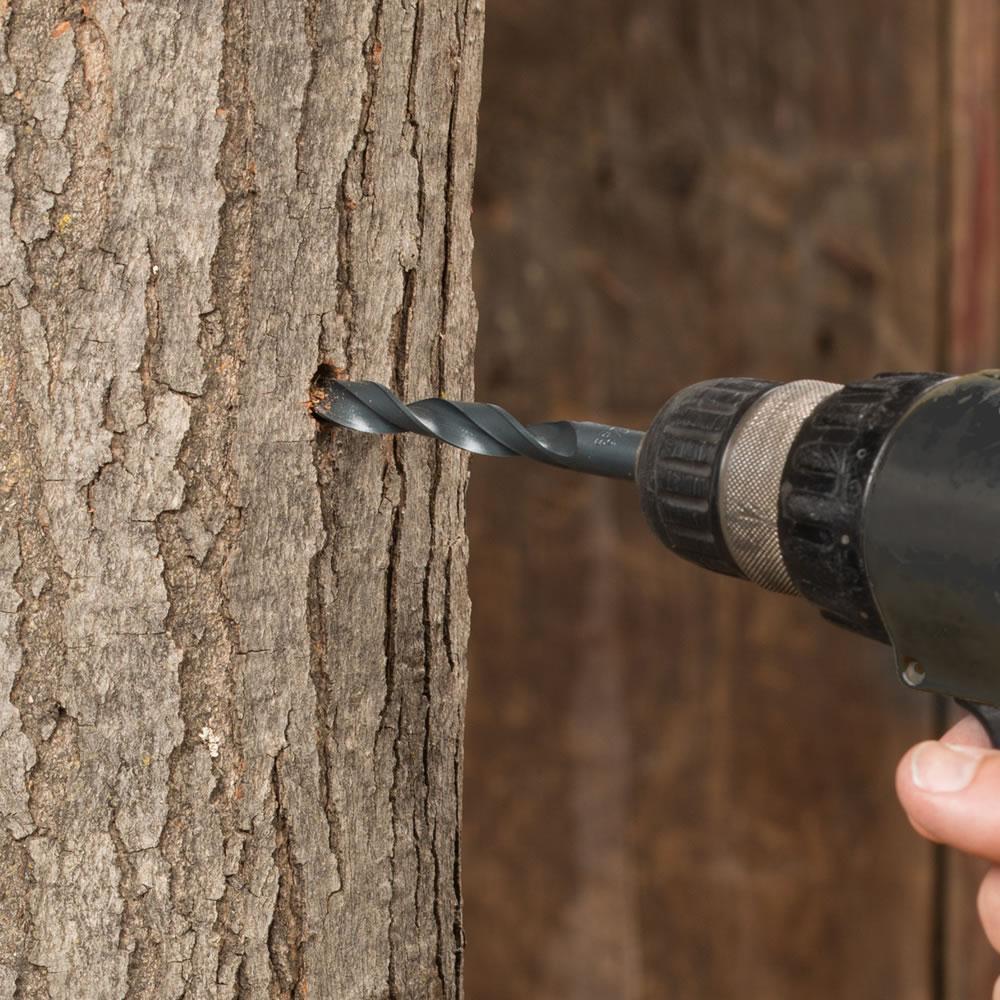
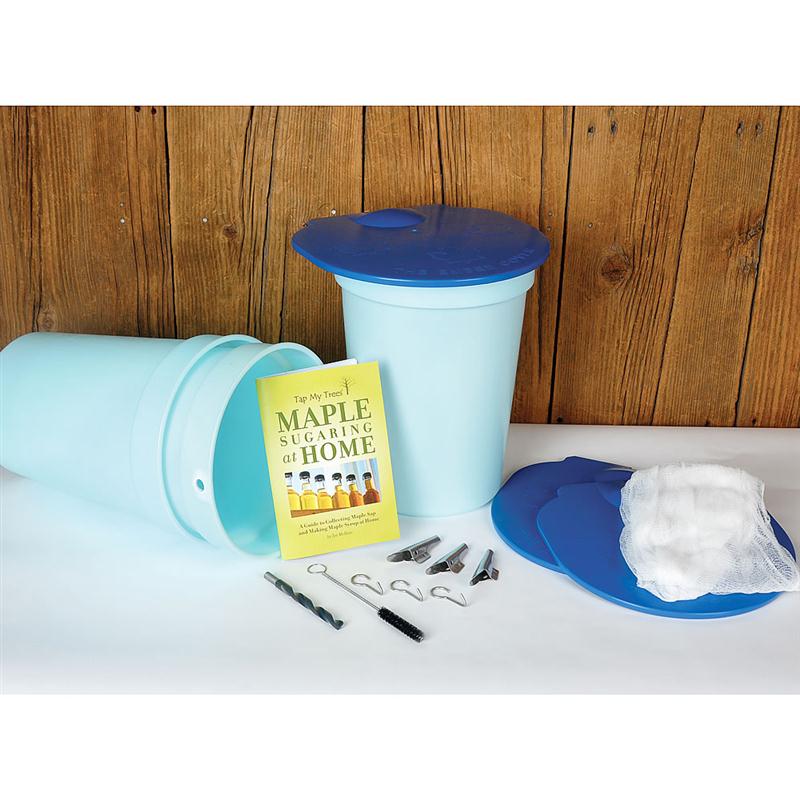
Prepare your cooking equipment. A large pan on an old kitchen stove under a lean-to or inside a small shed next to an open door, will work fine. Some people enjoy cooking the sap outdoors in a pot or pan over a fire. However you choose, when the sap runs, be ready to cook. Filtering the finished syrup with a filter made specifically for maple syrup, is an option that most people choose, but it is not totally necessary. The sugar sand will settle to the bottom of the syrup container, and will not affect the flavor.

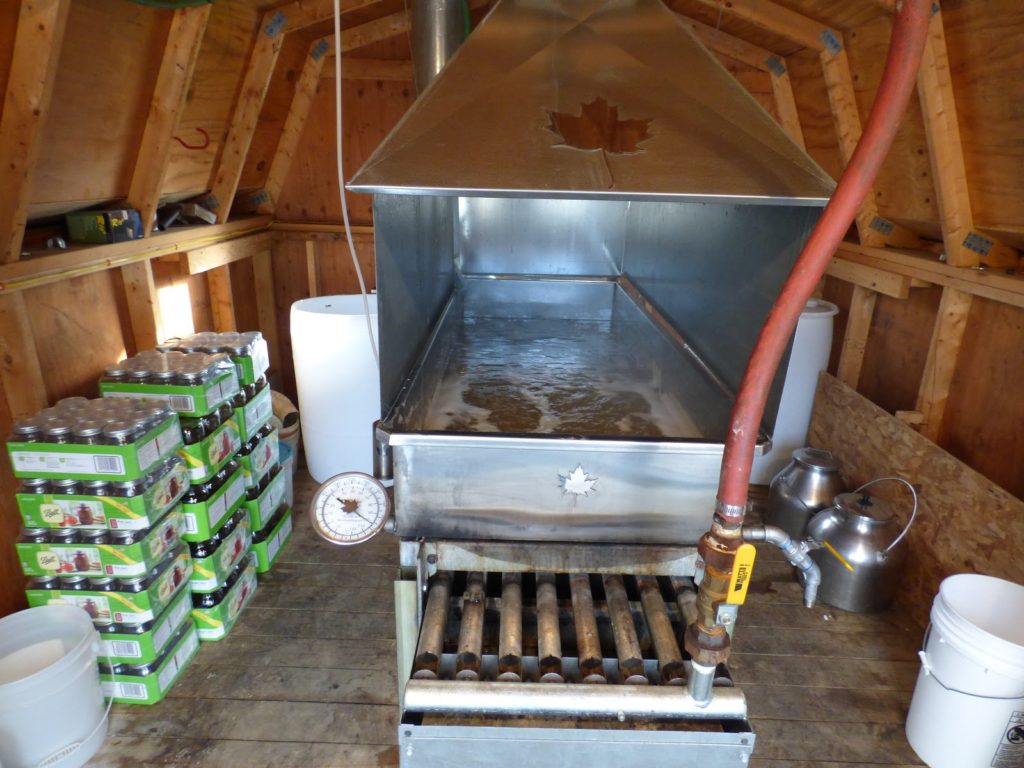
Enjoying your hard work
When you take that first bite of a pancake dripping with syrup that you made yourself, it will be the best you’ve ever tasted. There is so much satisfaction in enjoying what you have worked for, that a value cannot be put on it. And the time spent with your family doing a project like this is irreplaceable. Take plenty of pictures of your project. You are not only making syrup, you are making memories.

For additional details, much information is available on the internet. Better yet, while you are purchasing spiles, buckets, and a drill bit, get a book on the subject. Learn the history, read more about the different methods of home production, and learn how to know when your syrup is finished.
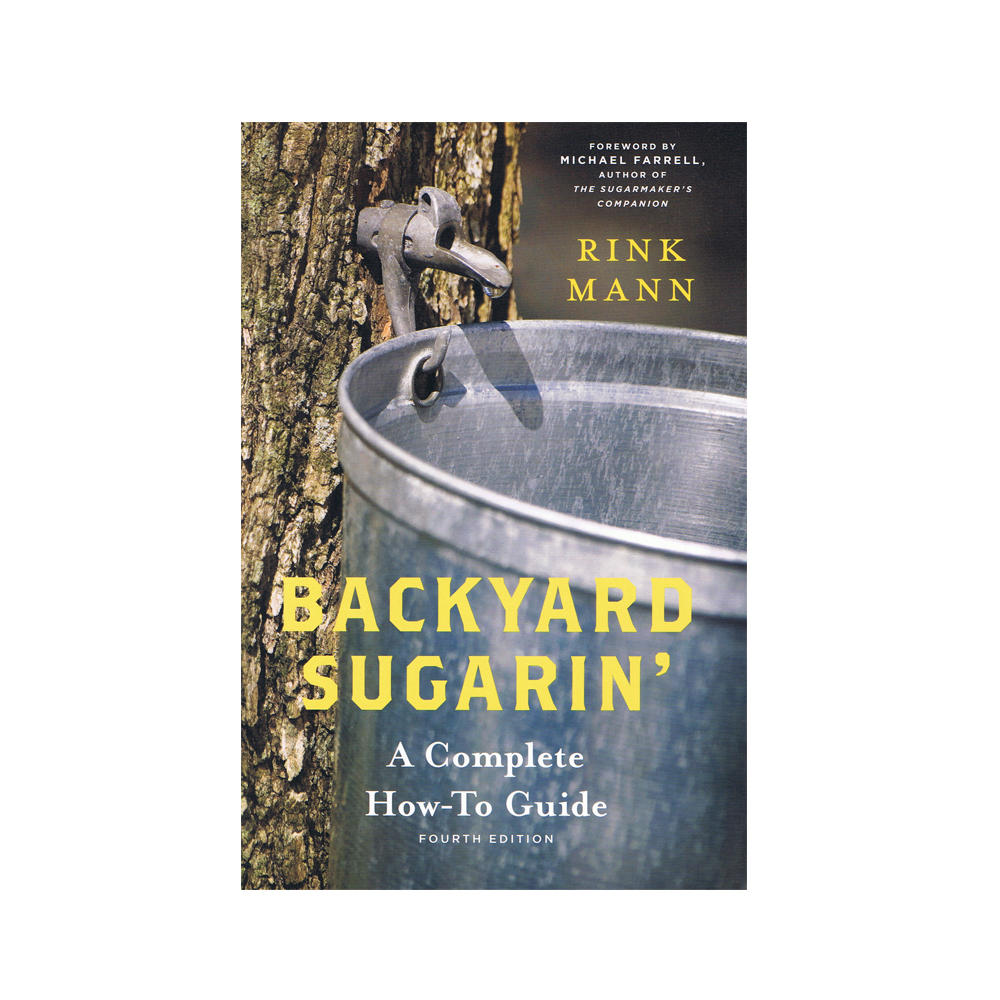
It’s time to get ready folks. It’s a great family project, and this is the best year to begin.

